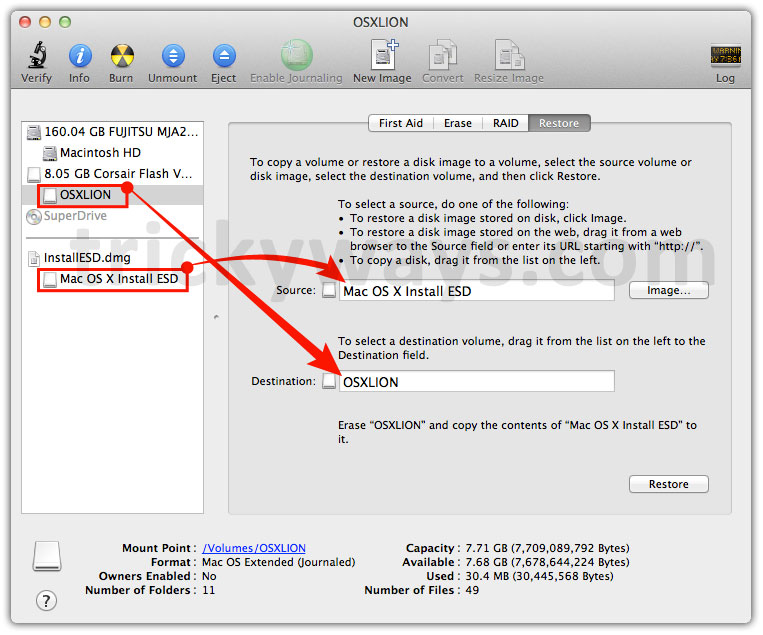
dmg file to an external disk.Ģ) "with an appropriate buffer size to copy over the whole block image, including partition table and boot sector" Many thanks to you and daveosborne for your hints !ġ) I'm currently dumping the content of a.

(This hint originally appeared on my site.) I get around two terabytes a day of transfer rate I know of no way to skip sparse areas of the disk image, but could approximate it by dding the first few megabytes of the image, then using Apple System Restore to copy each volume individually.Įxpect large speedups for sparse disks with this method. dd if=/dev/disk3 of=/dev/disk2 bs=131072Fourth, unmount everything and enjoy your copied disk.

Note that it is extremely important on some hardware to use a large block size you can expect a 20x speedup over the case without blocksize parameter. dmg file as a block device only: hdid -nomount "/Volumes/Diotallevi/Clean Checkpoints/WDC Image.dmg"Second, determine the block device of the image and destination: diskutil listThird, use dd with an appropriate buffer size to copy over the whole block image, including partition table and boot sector. You must use Terminal, as Disk Utility does not support this use.įirst, mount the. For this occasional task, the hdid utility is your friend. Luckily for us all, this task is possible! I hope to spare you much of the suffering I experienced with this hint. dmg file to be written to a raw disk or a block device. dmg file to be restored, nor did they allow a full-disk.

Much investigation and much research followed: the image was not corrupt, but the graphical tools did not allow a multi-partition. Said date came all too soon, and I found myself accused by Disk Utility of offering it a corrupted image.
DISK UTILITY RESTORE DMG TO USB FULL
Like many others, I used Disk Utility to create a disk image (.dmg) from my full disk, with the expectation that I could restore this backup at a later date.


 0 kommentar(er)
0 kommentar(er)
